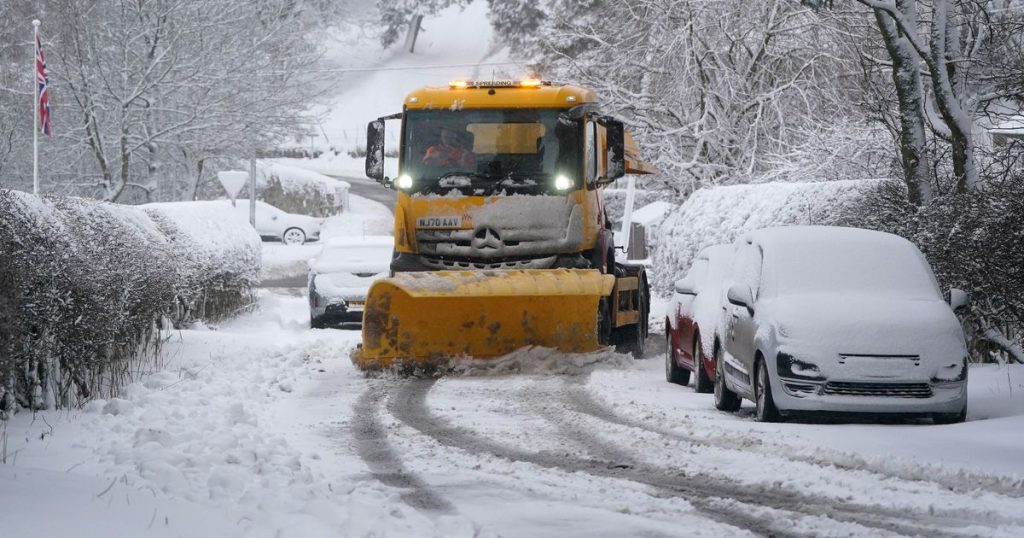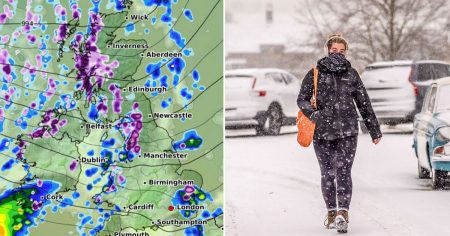Understanding the Cold Health Alert: A Regional Perspective
The UK Health Security Agency (UKHSA) has recently issued a cold health alert for several regions in northern England, including the North East, North West, and Yorkshire and the Humber. This alert comes as parts of Britain are experiencing sub-zero temperatures, which can pose significant risks to public health, particularly for vulnerable populations. The purpose of this alert is to raise awareness among residents, healthcare providers, and local authorities about the potential health dangers associated with cold weather and to encourage proactive measures to mitigate these risks.
The Health Risks of Cold Weather
Cold weather can have a range of adverse effects on health, particularly for older adults, young children, people with chronic illnesses, and those living in poverty or inadequate housing. Prolonged exposure to cold can lead to hypothermia, a condition where the body’s core temperature drops below 35°C (95°F), causing symptoms such as shivering, confusion, and drowsiness. If left untreated, hypothermia can be life-threatening. Additionally, cold weather can exacerbate existing conditions like asthma, arthritis, and cardiovascular diseases, leading to increased hospital admissions and mortality rates.
Vulnerable Populations and the Need for Targeted Support
The cold health alert highlights the need for targeted support for vulnerable populations during periods of cold weather. Older adults, for instance, may be at higher risk due to reduced mobility, poorer circulation, and the fact that their bodies may struggle to regulate temperature as effectively as younger individuals. Similarly, young children may be more susceptible to cold-related illnesses because their bodies are still developing. People with chronic illnesses, such as heart disease or diabetes, may also face heightened risks due to the additional strain cold weather places on their bodies. Homeless individuals and those living in poorly insulated or fuel-poverty households are particularly vulnerable, as they may lack access to warmth and adequate resources to protect themselves from the cold.
Practical Advice for Staying Safe During the Cold Snap
In response to the cold health alert, residents in the affected regions are encouraged to take practical steps to stay safe during the cold snap. This includes staying indoors as much as possible, especially during the coldest parts of the day, and heating homes to at least 18°C (64°F), particularly for vulnerable individuals. Wearing warm, layered clothing, including a hat and gloves, can help retain body heat. It is also important to stay hydrated and eat nutritious meals to maintain energy levels. Checking on neighbors, especially the elderly or those living alone, can be a vital way to ensure everyone stays safe and healthy.
The Role of Local Authorities and Community Responses
Local authorities and community organizations play a crucial role in responding to cold health alerts and supporting vulnerable populations during cold weather. This includes ensuring that social services are equipped to provide assistance, such as delivering hot meals, blankets, and heating fuel to those in need. Public health campaigns can also be instrumental in raising awareness about the risks of cold weather and the steps individuals can take to protect themselves. Community centers and libraries may serve as warm spaces where people can gather, access information, and stay safe during the coldest periods. By working together, local authorities and residents can build resilience and ensure that everyone in the community is prepared to face the challenges posed by cold weather.
A Call to Action: Preparing for Future Cold Weather Events
While the immediate focus is on responding to the current cold health alert, it is also important to look ahead and prepare for future cold weather events. This includes improving the energy efficiency of homes, particularly for low-income households, and expanding access to affordable heating solutions. Strengthening social support networks and increasing public awareness about cold weather risks can also help reduce the impact of future cold snaps. By taking proactive steps now, communities can build a more resilient and adaptive response to cold weather, ensuring that everyone, especially the most vulnerable, is protected and supported.
In conclusion, the UKHSA’s cold health alert for the North East, North West, Yorkshire, and the Humber serves as a critical reminder of the health risks associated with cold weather and the need for collective action to mitigate these risks. By understanding the health dangers, supporting vulnerable populations, and taking practical steps to stay safe, residents and local authorities can work together to ensure the well-being of everyone in the community during this challenging time.












